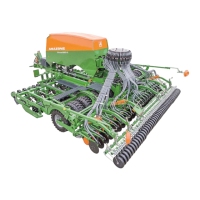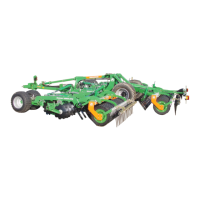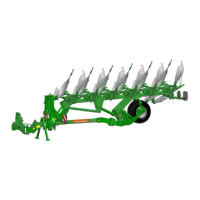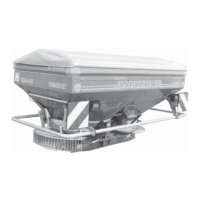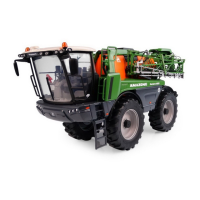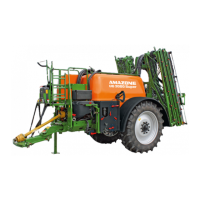5.8.3 Seed rate adjustment with full dosing (optional)
With machines with full dosing one electric motor
(Fig. 67/1) each drives a dosing roller.
The rotational drive speed of the dosing roller is
determined by the working speed and the preset
sowing rate.
Enter the required seed quantity in the AMA-
TRON 3.
The AMATRON 3 uses this value and the ad-
justed machine working width to calculate the
theoretical number of rotations of the electric
motor or the dosing roller.
For machines that have several electric motors,
the speed of all of the electric motors is the
same.
67
Run the first calibration test and enter the weight of the collected seed
quantity in the AMATRON 3.
Using this value, the AMATRON 3 calculates the number of rotations
of the electric motor that are required for the field work later on.
A second calibration test is essential. The required seed quantity is
usually applied during the second calibration test. If this is not the
case, repeat the calibration test until the required seed quantity is
reached.
Always carry out a calibration test:
• during the initial operation
• when the seed type is changed
• if the seed type is identical, but the grain size, grain shape, spe-
cific weight and dressing are different
• after replacing the dosing roller
• if the tank takes more/less time than expected to empty. The
actual spread rate then does not correspond to the spread rate
that was determined during the calibration test.
The speed of the dosing roller is determined by the spread rate that is
set in the AMATRON 3 and the working speed. The higher the speed
of the dosing roller, the greater the spread rate.
The speed of the dosing roller automatically adapts to the changing
working speed.
72 Cirrus BAH0049-1 09.14
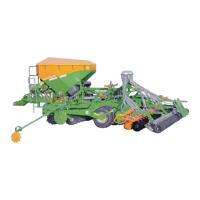
